#Marguerite de Valois-Angoulême
Text
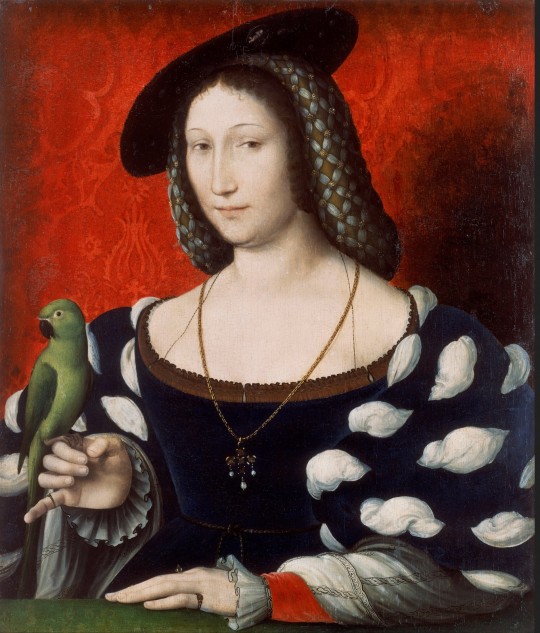
Puissance
Bevor es Flünzer und Fleusen gab, gab es Leute mit puissance. Darunter stelle ich mir Linien vor. Machthaber oder Kräfte stelle ich mir darunter vor, sobald man mir die Linien zeigt. Die Effektivität juridischer Kulturtechniken als puissance zu beschreiben fängt mit einem Protokoll graphischer Routinen oder Routen an.
In der Technikphilosophie und bei Bruno Latour wird ab und zu das Technische als black box beschrieben. Man spricht dort nicht von Effektivität, sondern zum Beispiel von Agentialität. Das Technische, die black box, übernimmt etwas, zum Beispiel eine Handlung. Die Handlung wird von etwas anderem, von jemandem zum Beispiel übernommen. Man weckt sich nicht mehr selber, das macht der Wecker für einen, sogar gegen einen gegenwärtigen Willen am Morgen, aber dafür mit einem enfernten Willen am Abend, da wollte jemand noch früh aufstehen. Das Technische und die black box übernehmen etwas, sie schirmen sogar den Vorgang vor demjenigen ab, dem der technische Vorgang wiederum nutzen soll. Die Technik übernimmt etwas, sie nimmt etwas ab. Sie führt dazu, dass sie den Nutzern etwas machen lässt. Der Wecker macht einen wecken, man kann ihn nicht einfach einsetzen, um sich einen Espresso zu machen. Das Telephon macht einen telephonieren, man kann mit dem Telephon weder Briefe schreiben noch Pizza backen. Die Übernahme formatiert etwas. Die Technik und die black box sollen darüber hinaus etwas involvieren, etwas "einfalten", heißt es bei Bruno Latour. Eine Heterogenität wird eingefaltet: In der black box kommen unterschiedliche Zeiten und Materialien, unterschiedliche Intentionen und Bedingungen, unterschiedliche Kontexte und Folgen zusammen, sie sind alle eingeschlossen und darin sogar versiegelt. Man kann den Begriff der Technik und den der black box in gewisser Hinsicht auch für die Vorstellung von puissance, ihrer Linien, ihrer graphischen Routinen oder Routen heranziehen. Die Vorstellung einer Abschirmung oder Versiegelung gelingt nicht perfekt, wenn man an graphische Routinen oder Routen denkt.
Bei Aby Warburg zum Beispiel haben graphische Routinen mit Ellipsen zu tun, also mit mindestens zwei Kräften, die sich kreuzen und die dafür sorgen können, dass graphische Routinen etwas überspringen, dass sie verkürzt oder verdichtet, sprunghaft oder gedehnt erscheinen und die insoweit sich schon mit ihren wechselseitigen Befremden einer Theorie der Eigenkraft entziehen. Vielleicht ist das einer der Gründe, warum Warburg lieber von Energie als von Kraft spricht und sich in die physikalischen Theorien zur elektrischen Spannung und ihrer Polarität einarbeitet, besser vermutlich als in deutsche Systemphilosophie und ihren ganz bestimmt systematisch entwickelten Begriff der Kraft . Warburgs graphische Routinen und Routen können Kehren ziehen, deren Wiederkehr nicht über ihre Anfangspunkte führt, deren Zirkel sich nicht schließen und die insoweit auch ausfransen können, sie können aufgeladen werden, sich entladen, sie können blitzen. Wie bei den Leuten, nach denen der Laokoon schaut und die man besonders gut daran erkennt, dass an ihnen (im Unterschied zu den Personen) etwas, zum Beispiel ein Faden, absteht oder ein Knopf offensteht oder fehlt oder die Trikotagen abgewetzt sind, können bei solchen graphischen Routinen oder Routen Fäden abstehen, sie können löchrig sein. Die Linien können Schlangen sein. Die puissance leidet darunter nicht, auch nicht die Effektivität. Aby Warburg nutzt Tafeln für graphische Routinen und Routen, aber ich denke nicht, dass zwischen Warburgs Tafeln und Aby Warburg etwas abgeschirmt oder beschirmt ist. Tafeln sind skalierbare Operationsfelder, das sind auch technische Einrichtungen, Warburgs Tafeln ist Technik, wenn manden Begriff der Technik nicht da enden lässt, wo ein Treiben beginnt. Mir ist aber schwer vorstellbar, dass Warburgs Tafeln ihm oder sonst jemanden eine black box sind. Seine Tafeln sind auch diplomatisches Material, das ist gefaltetes und biegsames, "allzu biegsam[es]" (Warburg) Material. Aber black blox? Ich weiß nicht.
#Marguerite de Valois-Angoulême#Jean Clouet#puissance#bruno latour#black box#graphische routinen und routen
2 notes
·
View notes
Text
Marguerite de Navarre’s discussion of courtly love, La Coche (The Coach) (1541–42), was dedicated to [Anne de Pisseleu]. The relations between Marguerite and Anne were complex. Sometimes described as rivals, they often shared tactical objectives in court politics and, though Marguerite was waspish about many others in her talks with foreign envoys, she never was about Anne. There was clearly also some sympathy between them in matters of religion, which in Anne’s case developed later into Protestantism. Marguerite’s poem is a discussion about the miseries and pains of love, which are submitted by Marguerite to the arbitration of Madame d’Étampes in the absence of her brother the king. The text also contains an extended eulogy of Anne (though not named directly) in which she is likened to ‘a sun midst stars who spares nothing for her friends, nor stoops to vengeance on her foes’. Marguerite addresses her as cousin and mistress. There are several illuminated copies, the best known in the Musée Condé showing Marguerite presenting the work to Anne."
-David Potter, "The Life and After-Life of a Royal Mistress: Anne de Pisseleu, Duchess of Étampes"
#historicwomendaily#anne de pisseleu#french history#16th century#my list#Marguerite of Angoulême#marguerite de navarre#marguerite de valois#I don't know what to tag her :(#Anne and Marguerite (+Diane de France) are the most interesting women of 16th century France to me#so I love that both of them were allies and seem to have gotten along#my post
16 notes
·
View notes
Text
Marguerite de Valois-Angoulême, duchesse de Berry
Madame de Savoïe. Marguerite de Valois-Angoulême, duchesse de Berry (1523–1574)
Madame de Savoïe
Marguerite de Valois-Angoulême, duchesse de Berry (1523–1574)
Black pencil and red chalk.
Marguerite de France, the fourth daughter of King Francis I of France and Claude, Duchess of Brittany, was born in Saint-Germain-en-Laye on 5 June 1523 and married the Duke of Savoy, Philibert-Emmanuel, on 9…
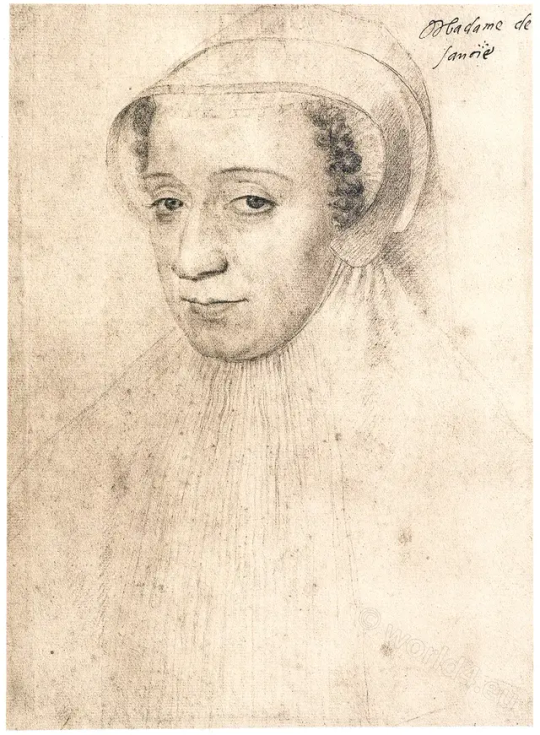
View On WordPress
0 notes
Text


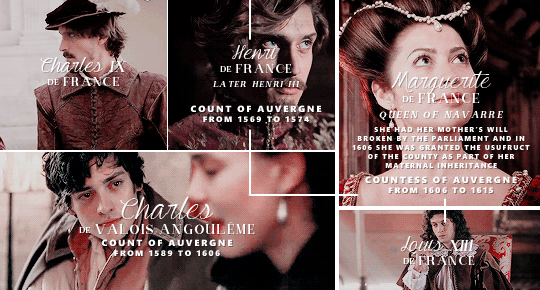
The succession to the county of Auvergne, throughout the 16th and in the early 17th century, encapsulates a series of dynastic conflicts. Catherine de Medici inherited the county from her childless maternal aunt, Anne, duchess of Albany, and then offered it to her son Henri, then duke of Anjou, in 1569. Her daughter Marguerite challenged her will after her death, asserting that as the only surviving child of her late mother, she should have been the recipiendary of the county, which was at the time the property of her bastard nephew, Charles de Valois-Angoulême, only surviving child of her late brother Charles IX and adoptive child of Henri III. She was supported in her efforts by her former husband, Henri IV, who had interests in her winning her case. The new king viewed the matter as the perfect way to tie the soon to be extinguised royal house of Valois to the Bourbon family, by suggesting that Marguerite, childless and divorced, made the Dauphin, future Louis XIII, her heir in the succession. She was eventually granted the usufruct, in large part because her bastard nephew had himself been condemned for treason after actively plotting with his half-sister Henriette d'Entragues and Spain to have the Dauphin replaced by his bastard brother born from the marchionness.
#historyedit#perioddramaedit#documentaryedit#anne de la tour d'auvergne#madeleine de la tour d'auvergne#catherine de medici#charles ix#henri iii#marguerite de france#charles de valois-angoulême#louis xiii#mine#*#16th century#17th century
265 notes
·
View notes
Photo


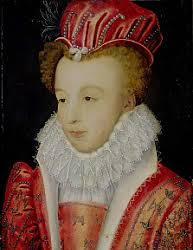
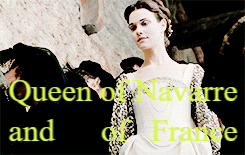

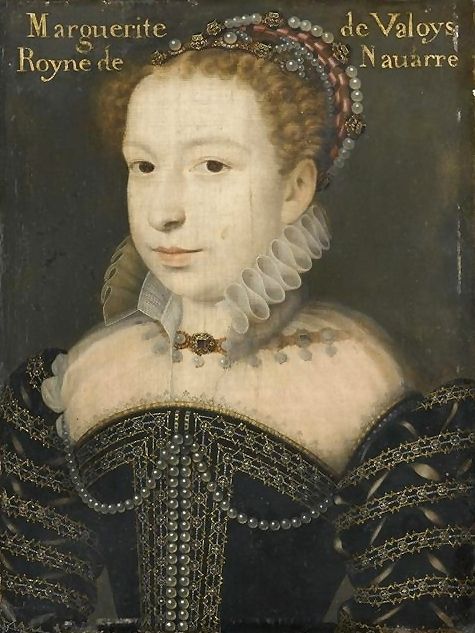
Hɪsᴛᴏʀɪᴄᴀʟ ᴄʜᴀʀᴀᴄᴛᴇʀs ᴡʜᴏ ᴅᴇsᴇʀᴠᴇᴅ ʙᴇᴛᴛᴇʀ [₈ /₁₀]﹕
● Mᴀʀɢᴜᴇʀɪᴛᴇ ᴅᴇ Vᴀʟᴏɪs﹐ Qᴜᴇᴇɴ ᴏғ Nᴀᴠᴀʀʀᴇ ᴀɴᴅ Fʀᴀɴᴄᴇ ●
● 𝖥𝖺𝗇 𝖼𝖺𝗌𝗍: ●
𝐶𝑎𝑚𝑖𝑙𝑙𝑒 𝑅𝑢𝑡𝘩𝑒𝑟𝑓𝑜𝑟𝑑 𝑎𝑠 𝑙𝑎 𝑅𝑒𝑖𝑛𝑒 𝑀𝑎𝑟𝑔𝑜𝑡.
#Marguerite de Valois#Margaret of Valois#Queen Margaret of France#Queen Margot#La reine Margot#House of Valois#Valois-Angoulême#Queen of Navarre#Henri IV#Henry IV#Queen Marguerite#Camille Rutherford
23 notes
·
View notes
Photo
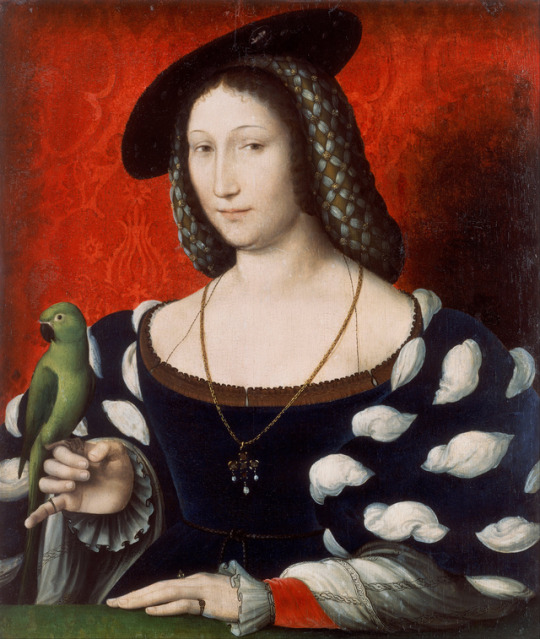
Marguerite de Navarre, by Jean Clouet.
#Marguerite de Navarre#Marguerite of Angoulême#house of valois angouleme#queen of navarre#jean clouet#long live the queue
68 notes
·
View notes
Photo
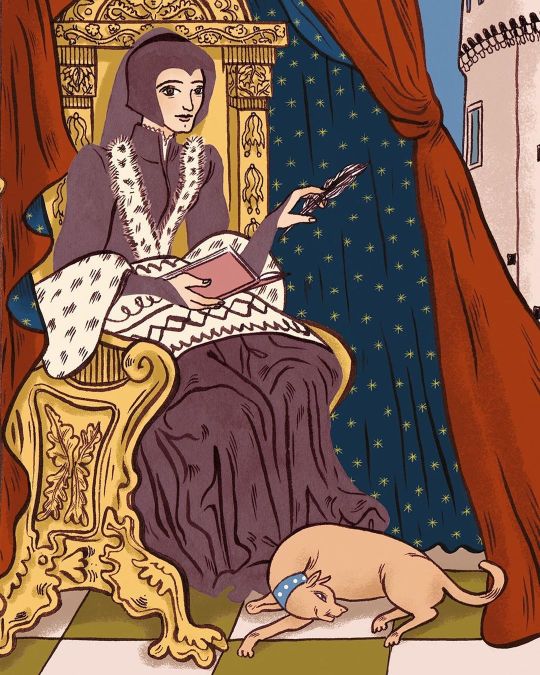
Here the cover I did for the 2021 calendar of the town hall of Angoulême. Who's that lady, standing in front of the "Hotel de Ville"? ✨👸🏻✨⠀ ⠀ But of course the one and only star of this city, Marguerite de Valois-Angoulême, princess of France, Queen of Navarre, and Duchess of Alençon and Berry! 🙃⠀ However, she also was an influent poetess of her times, as she wrote many poems and plays. Her most notable works are a classic collection of short stories, the Heptameron, and a remarkably intense religious poem, Miroir de l'âme pécheresse (Mirror of the Sinful Soul).⠀ As an author and a patron of humanists and reformers, she was an outstanding figure of the French Renaissance; Samuel Putnam called her "The First Modern Woman". 🔥⠀ ⠀ So, it was an incredible honor to draw this lady, a symbol for this city. A city which gave me so much in terms of possibilities, growth and encounters in those last years...⠀ ⠀ The idea of this calendar was to celebrate seven emblematic monuments of Angoulême and seven women linked to the territory who have distinguished themselves over time: for this task the @mairieangouleme called seven talented illustrator as @giorgiacasetti, Lise Topin, @sandrinemartin_illustration, @morganeparisi, Caroline Sury and @michaelis_fanny. I'm happy to be part of this group. ⠀ ⠀ Don't forget to follow these illustrators and... Stay safe and take care! 😉💕⠀ Ps. To see the whole Illustrator bigger (sorry the formatting here is not the best, go in my stories or in my website, link in bio!) ⠀ #illustration #drawing #dessin #renaissance #margueritedevalois #histoire #history #hoteldeville #angoulême #villeangoulême #mairieangouleme #poetess #poésie #rinascimento #literature #queen #medievalilluminations #giorgiamarras #enluminures⠀ #historicalfashion #france⠀ ⠀ ⠀ ⠀ ⠀ ⠀ (presso Angoulême, France) https://www.instagram.com/p/CKT6FAKB3mp/?igshid=f1jl84hodxm4
#illustration#drawing#dessin#renaissance#margueritedevalois#histoire#history#hoteldeville#angoulême#villeangoulême#mairieangouleme#poetess#poésie#rinascimento#literature#queen#medievalilluminations#giorgiamarras#enluminures#historicalfashion#france
4 notes
·
View notes
Note
Hello ! Francisco I of France is that fascinating character. Could you tell me curiosities about him please. Thank you :)
Hi anon and thank you to @latristereina for directing you toward me! I haven’t studied François Ier specifically yet (I have books on him that I will read once my Uni is done with victimizing me) but I do like him and have cross path with him in my studies multiple times and I agree with you he is a fascinating historical character. So here are some curiosities about him (when I am unsure about something I will start it by apparently for clarity purposes):
- According to his portraits and still existing armors, François Ier was very tall. Around 2m tall (6.6 feet) which would be tall by today standards but even more by his time standards.
- He was the first King of France to enter in an official alliance with the Ottoman Empire.
- He was very close to his mother, Louise of Savoy, and his older sister, Marguerite de Navarre (to whom he apparently looks a lot like).
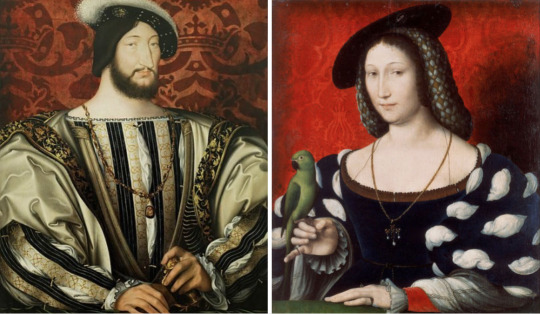
Both women held extremely important place at his court, his mother was his regent when he was on campaign or hostage, and he protected his sister from religious persecution when she publicly showed her protestantism (which was clearly done specifically for her since it didn’t extend to other protestants).
- While studying the creation of the State in France, I have seen François Ier presented as the first “modern” king. Meaning that with François Ier, in term of political sciences analysis, we have entered completely the State paradigm.
- Apparently, according to a painting restorer who worked on De Vinci paintings (I went to one of her conferences), when he reached Rome during his Italian campaign he actually met Leonard de Vinci before meeting the Pope.
- Apparently, during their wrestling match at the Field of Cloth of Gold, François Ier won against Henry VIII by using a grip which was forbidden by the English rules but not by the French rules.
- Apparently he was “against” Madeleine of Valois’s marriage to King James V because he thought her health was too fragile for ever leave the French court (especially for Scotland). He eventually agreed to the match because Madeleine herself wanted to marry James V.
- While he is known as a Valois King, or rather a Valois-Angoulême King, he is a direct descendant through a legitimate male line of the Capetian dynasty (like every King of France up until Louis-Philippe). His great-great-grand-father was Charles V of France (Valois) whose grand-father was the first Valois King of France, Philip VI of France (Valois), whose grand-father was Philip III of France (Capet).
If you want better curiosities or better info about François Ier I will direct you toward @winterhalters and maybe also @queenfredegund.
16 notes
·
View notes
Photo


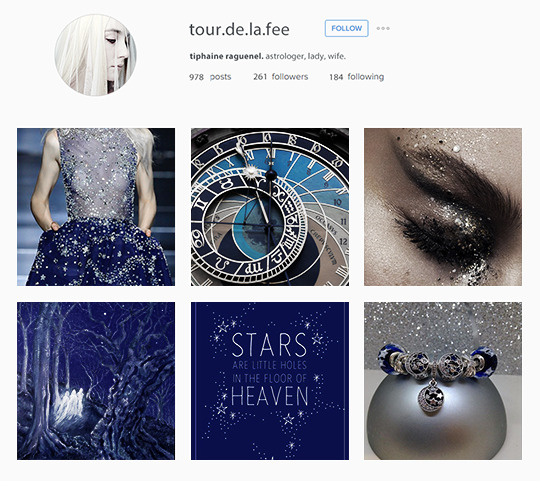


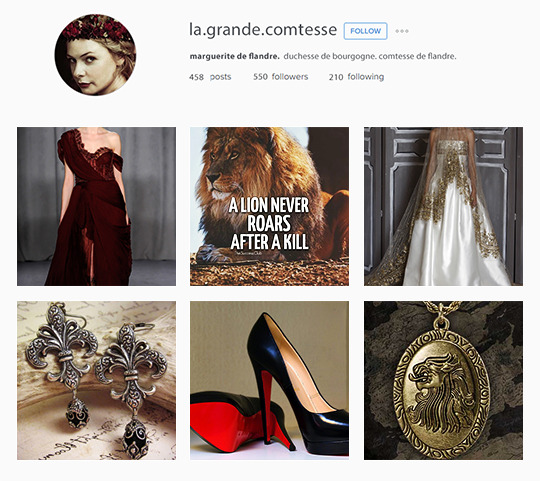
Fake Instagram || modern women of the hundred years war, part II
Joan of Kent: Wife of Edward, the Black Prince and Thomas Holland, 1st Earl of Kent. Daughter of Edmund of Woodstock, 1st Earl of Kent and Margaret Wake, 3rd Baroness Wake of Liddell. Mother of Thomas Holland, 2nd Earl of Kent; John Holland, 1st Duke of Exeter; Joan Holland, duchesse de Bretagne; Maud Holland, comtesse de Ligny; Edward of Angoulême; and Richard II of England
Isabella, Countess of Bedford: Daughter of Edward III of England and Philippa de Hainaut. Wife of Enguerrand VII de Coucy, Earl of Bedford. Mother of Marie de Coucy, comtesse de Soissons and Philippa de Coucy.
Tiphaine Raguenel: Wife of Bertrand du Guesclin. Daughter of Robin III Raguenel, seigneur de Châtel-Oger and Jehanne de Dinan, vicomtesse de La Bellière.
Jehanne de Bourbon: Wife of Charles V de France. Daughter of Pierre, duc de Bourbon and Isabelle de Valois. Mother of Charles VI de France and Louis, duc d’Orléans.
Marie de Blois: Wife of Louis, duc d’Anjou. Daughter of Charles de Blois-Châtillon and Jehanne de Penthièvre. Mother of Louis II d’Anjou.
Marguerite III de Flandre: Wife of Philippe le Hardi, duc de Bourgogne. Daughter of Louis II de Flandre and Marguerite de Brabant. Mother of Jehan sans-Peur, duc de Bourgogne; Antoine, duc de Brabant; Philippe, comte de Rethel; Marguerite de Bourgogne, gravin van Holland en Zeeland; Catherine de Bourgogne, Herzogin von Österreich; and Marie de Bourgogne, duchessa di Savoia.
#fake instagram#hundred years' war#medieval#french history#english history#european history#women's history#history#nanshe's graphics
20 notes
·
View notes
Link
Comment les dames de Brantôme nous ont laissé leurs portraitures et quelques détails sur leurs peintres, leurs modes, leurs goûts et leurs plaisirs.
Imaginez une cour créée de toutes pièces, une société polie de jeunes seigneurs et de belles filles succédant à la maison pleine de sévérité et de pruderie de la reine Anne de Bretagne, quelque chose comme une envolée joyeuse d’amourettes et d’adolescences laissées la bride sur le col, encouragées même par le nouveau maître, c’est, à ne rien exagérer, l’abbaye de Thélème, la cour du roi François Ier de Valois-Angoulême. Et parmi ces têtes folles, les nouveaux venus des lettres et des arts, poètes diseurs de riens charmants, peintres accourus d’Italie, dessinateurs descendus des Flandres, qui ne chômeront point dans le brouhaha des fêtes; ceux-là occupés à chanter les déesses du jour sur le rythme doux des odes latines ou françaises, ceux-ci chargés de les peindre dans leurs allégories décoratives, d’autres désignés pour en conserver les traits dans des esquisses rapides.
Et bientôt l’envie naîtra chez «un chacun» de garder par devers soi les visages charmants dont tout le monde parle; les provinciaux exilés, les heureux même vivant à la pleine lumière de la cour, tiendront à honneur de former des cahiers où le peintre favori jettera ses croquis. Pastels légers, périssables, œuvres à peine caressées, surprises à la hâte dans une cérémonie, parfois copiées sur d’autres plus anciennes, embellissant ou [Pg 2]déformant le modèle, tous ces crayons, comme on disait, se répandirent à travers le monde. Ce fut un engouement irrésistible. Les plus délicats joignaient à ces figures un peu mornes, un peu trop posées, quelques devises à la mode du jour redisant les vices ou les vertus du personnage. Une légende depuis colportée [1] attribue au roi François lui-même la première idée de ces facéties. Hélène de Hangest-Genlis, femme du grand maître de Boisy, son précepteur, s’était mise à dessiner, elle aussi, la bonne dame, comme un simple homme de mestier. Elle avait ainsi réuni dans un album les gens célèbres du temps, depuis la grand’sénéchale, la belle Diane de Poitiers, alors dans tout l’éclat de ses vingt ans, jusqu’à Marguerite de Valois, sœur du roi, et plusieurs autres beautés célèbres.
0 notes
Note
I'm a history major and I love British history. But I am half French (my moms from France) and I barely know anything about French history and I don't know where to start. I love kick ass women and cultural history a lot especially from the 1400-1600s. Are there any people you recommend I start with or books I could read?
hi! unfortunately there’s a real lack of translation when it comes to french history books, and not much written outside of the country. At the very least i can recommand:
Encyclopedia ofWomen in the Renaissance, A. Larsen, D. Robin, C. Levin (certainly the best to start with!)
Queens and Mistresses of Renaissance France, K. Wellman
Catherine de Medici, L. Frieda
A History of Sixteenth-Century France, 1483-1598, J. Garrisson
Martyrs and Murderers, the Guise Family and the making of Europe, S. Carroll (a bit more focused than the others, but you can read there about Antoinette de Bourbon, though i recommand it only when you will have the beginning of a strong basis)
Twice Queen of France: Anne of Brittany, M. Allen Butler
The Monstrous Regiment, Female Rulers in Early Modern Europe, S. L. Jansen (it looks promising but i haven’t read it myself yet!)
RJ Knecht isn’t really on point when it comes to women so, i can recommand him for many subjects but meh, not this one.
As for the people, here are just the ones that come to my mind :
Anne of France
Anne of Brittany
Anne de Pisseleu
Antoinette de Bourbon
Diane of Poitiers
Jeanne d’Albret
Marguerite of Valois
Louise of Savoy
Marguerite of Angoulême
Claude of France (many people will tell you she wasn’t a typical kickass woman, but she knew SO much and she was kind of a passive agressive strength at Court)
Renée of France
Catherine de Medici (obviously)
50 notes
·
View notes